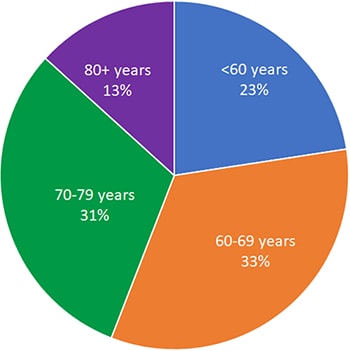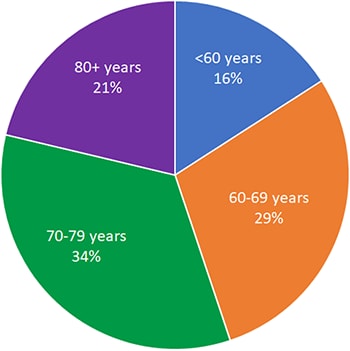Lung Cancer Incidence in the American Indian and Alaska Native Population, United States Purchased/Referred Care Delivery Areas—2012–2016
U.S. Cancer Statistics Data Briefs, No. 14
November 2019
This data brief uses the most recent data available at the time of publication. More recent data may be available in a newer data brief or in the U.S. Cancer Statistics Data Visualizations tool.
Alaska Native and American Indian people in the Northern and Southern Plains experience disproportionately higher lung cancer incidence rates compared to non-Hispanic White people.
Lung cancer is the leading cause of cancer death among American Indian/Alaska Native (AI/AN) men and women.
Most lung cancers are caused by cigarette smoking, and prevalence of cigarette smoking among AI/AN people varies by geographic region, which affects geographic variation in lung cancer incidence rates.
Some other risk factors for lung cancer include exposure to secondhand smoke, asbestos, and naturally occurring radon gas in homes. An occupational history of uranium mining [PDF-313KB] is also a risk factor for lung cancer.
Differences by Age at Diagnosis
Lung cancer tends to be diagnosed at a younger age among AI/AN people than among NHW people. 23% of lung cancer cases among AI/AN people were diagnosed before age 60 years compared with 16% among NHW people.
To improve the accuracy of cancer statistics for AI/AN people, these data are restricted to Purchased/Referred Care Delivery Areas (PRCDA) counties that contain federally recognized tribal lands or are adjacent to tribal lands. Race classification for the AI/AN population is more accurate in these counties.
For improved accuracy of racial classification, AI/AN race was reported by central cancer registries after linkage with the Indian Health Service (IHS) patient registration database and then restricted to AI/AN people with non-Hispanic origin.
Data for non-Hispanic White (NHW) people are presented for comparison.
Figure 1. Proportion of Lung Cancer Cases by Age at Diagnosis and Race, US PRCDA 2012–2016
American Indian/Alaska Native

Non-Hispanic White

Differences by IHS Region
Among AI/AN males and females, lung cancer incidence rates were higher in the Northern Plains, Alaska, and Southern Plains than in other IHS regions and were lowest in the Southwest. Overall, AI/AN males and females had higher lung cancer incidence rates than NHW males and females. Compared to rates among NHW people, lung cancer incidence rates were higher among AI/AN people in the Northern Plains, Alaska, Southern Plains, and Pacific Coast regions, but lower in the East and Southwest regions.
Figure 2. Lung Cancer Incidence Ratesa by Race, Sex, and IHS Region, US PRCDA 2012–2016
- Alaska (Alaska).
- Pacific Coast (California, Idaho, Oregon, and Washington).
- Southwest (Arizona, Colorado, Nevada, New Mexico, and Utah).
- Northern Plains (Indiana, Iowa, Michigan, Minnesota, Montana, Nebraska, North Dakota, South Dakota, Wisconsin, and Wyoming).
- Southern Plains (Kansas, Oklahoma, and Texas).
- East (Alabama, Connecticut, Florida, Louisiana, Massachusetts, Maine, Mississippi, New York, North Carolina, Pennsylvania, Rhode Island, and South Carolina).
Data Source
Data are from the U.S. Cancer Statistics American Indian and Alaska Native Incidence Analytic Database (USCS AIAD). This database includes data from cancer registries participating in CDC’s National Program of Cancer Registries or the National Cancer Institute’s Surveillance, Epidemiology, and End Results program that have been linked with the Indian Health Service Patient Registration Database. These linkages address racial misclassification of the AI/AN population in the central cancer registries. These data met quality criteria for 2012 to 2016.
Centers for Disease Control and Prevention. Lung Cancer Incidence in the American Indian and Alaska Native Population, United States Purchased/Referred Care Delivery Areas—2012–2016. USCS Data Brief, no. 14. Atlanta, GA: Centers for Disease Control and Prevention, US Department of Health and Human Services; 2019.